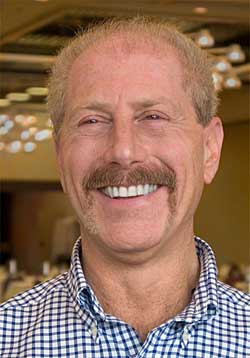Mobilizing Safety Leadership and Performance
Even with a multinational, polylingual, constantly moving workforce, a determined strategic approach can boost safety toward global-class levels.
- By Robert Pater
- Apr 04, 2007
 ARE you concerned about spurring and reinforcing change at sites far from corporate HQ?
ARE you concerned about spurring and reinforcing change at sites far from corporate HQ?
Paul Manzi can help. And he's not responsible for only a few far-flung plants. As global head of safety for BP Shipping, his charges are worldwide--and almost continuously moving targets.
When he first began at his position, Paul found an organization that was strong on commitment to being innovative, yet needed improvement on execution of safety leadership. In addition to having ships frequently on the move, he was faced with shifting multicultural crews, in working environments with changing risks (weather, etc.), with a get-it-done ethic.
With the support of his leadership at BP Shipping and BP Safety (including Deb Grubbe, formerly worldwide corporate safety director for DuPont), Paul planned to balance sharpened vision with detailed methods for elevating safe actions. What did Paul do that might also help you boost safety performance, whether you have in-plant or widespread responsibilities?
Sustaining new skills among an on-the-move workforce can be a real challenge.
- Focused in. Paul reduced the number of initiatives to be carried out. Reasoning that depth was more effective than breadth, he emphasized three key interventions for the year that could be communicated and continually practiced. This narrowing reduced spread of expectations (which could otherwise be rationalized as being "too much") and simultaneously provided central initiatives around which dispersed groups could unify, knowing everyone in the company focused on the same three key areas.
- Emphasized behavioral change. Shipboard work means being exposed to changing elements and conditions--risk avoidance through design only helps to a point. Hence, Paul knew it was critical that crew members take personal control for their own safety judgments and behavior, and that these actions also had to be efficient and productive. So in addition to traditional tool and task design safety improvements, Paul chose to emphasize safety behavioral change.
He designated one intervention that elevated personal worker safety judgment and injury-prevention skills as "the cornerstone of our safety efforts this year." He brought select crew members to London and to Mumbai, India to become trained as peer safety catalysts. They were provided the skills and materials for improving safe behaviors, both shipboard and at home (to reduce off-work risks brought back to the ship and to encourage formation of default safe actions).
- Set high expectations of safety leadership. Paul created self assessments, such as a "Safety Leadership Behavior Assessment" (with sections on "Vision," "Credibility," and "Collaboration"), which simultaneously, in a low-threat manner, communicated tie-ins between leadership and performance, boosted involvement in strategic thinking, and sent a personal responsibility message that leaders should look at themselves first for improvements.
- Reinvested safety leadership gains. Paul instituted a "CEO HSE award" with nominations open to anyone working with BP Shipping--crew, leaders, and contractors. Three winners were announced. Paul then hired an investigative journalist to fly to the winners' sites to determine what, if any, characteristics they shared in common.
The reporter discovered three similar elements:
- All winners talked primarily about relationships--between crew, crew to office, crew to Master, respecting one another and all people.
- Their safety communications were strong, thorough, and ongoing. They spread information about near misses and the need to look at changing risks, and they focused at least as much on injury prevention as on post-injury analysis. They had mottos, talked about the safety mission, and shared a personal sense of purpose that went beyond "do this so you don't get injured."
- They were truly humble. Though each winner's safety performance was outstanding, none was self-satisfied, none saw what he or she was doing as exceptional. Rather than congratulating themselves, they looked toward making continuous improvements.
- Worked both bottom-up and top-down. In addition to training peer safety catalysts, BP Shipping upgraded its safety leadership training for executives and mid-managers. In addition to self-assessment checklists, Paul has worked with line management to develop intensive conference education, where leaders were brought in to participate, learn, and then apply new skills.
- Reinforced new expectations and skills. Sustaining new skills among an on-the-move workforce can be a real challenge. To overcome this, Paul emphasized frequent communications, employing the Internet to disseminate regular info and program updates, to check in with trained safety catalysts, and to send the message that interventions should continue to be kept fresh and alive into next year, rather than stalling as "last-month's program."
So balance traditional safety with high-level behavioral skills, work up and down the organization, enlist and train site-level leaders, and continually communicate to sustain improvements. Even with a multinational and polylingual, constantly moving workforce, a determined strategic approach can boost safety toward global-class levels.
This column appeared in the April 2007 issue of Occupational Health & Safety.
This article originally appeared in the April 2007 issue of Occupational Health & Safety.